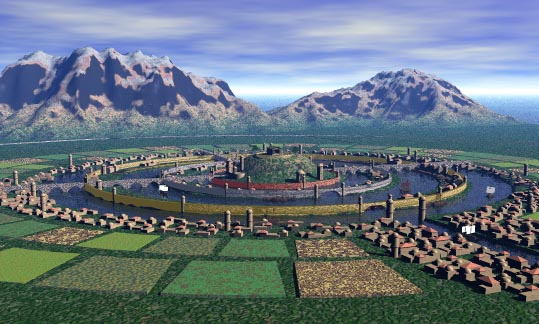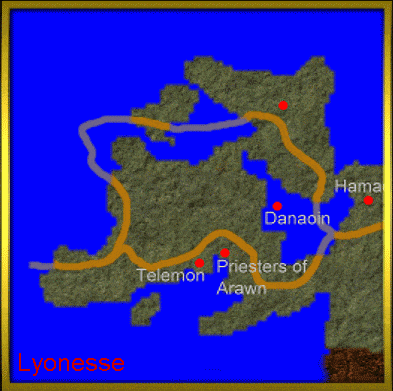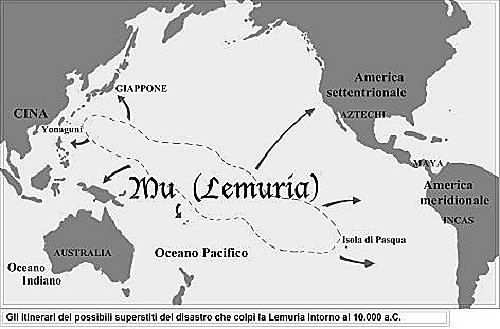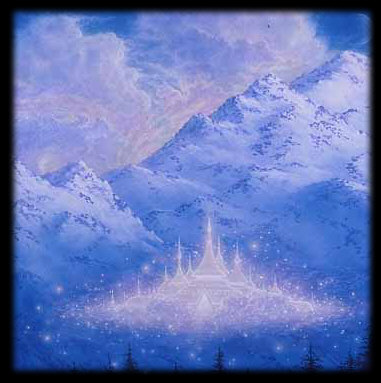| |
Unexplained Mysteries of LOST LANDS |
|
 |
Lost lands are continents, islands or other regions believed by some to have existed during prehistory, but to have since disappeared as a result of catastrophic geological phenomena or slowly rising sea levels since the end of the last Ice Age. Lost lands, where they ever existed, are generally thought to have subsided into the sea, leaving behind only a few traces or legends by which they may be known. The term can also be extended to mythological lands generally, to underground civilizations, or even to whole planets.
The classification of lost lands as continents, islands, or other regions is in some cases subjective; for example, Atlantis is variously described as either a "lost island" or a "lost continent".
Lost land theories may originate in mythology or philosophy, or in scholarly or scientific theories, such as catastrophic theories of geology, that may later be picked up by writers and individuals outside academia. Occult and New Age writers have made use of lost lands, as have native peoples such as the Tamil in India.
|
LYONESSE
Many western cultures have myths of lost lands, where once lived our great ancestors. Typical is Lyonesse, a fabled land once said to exist between Land’s End and the Scilly Isles, off the British coast.

On this land stood the city of Lions and some 140 churches. Folk tales, and later poets such as Tennyson, kept the fable alive by associating it with King Arthur. Thought to be the place of his birth, his death has also been associated with the lost land.
Logically, it seems the fable arose from its association with the Breton town St-Pol-de-Leon, know to the Roman’s as Leo’s Castle.
ATLAND
Another such fable concerns Atland. First coming to popular attention in 1848, when antiquarian Cornelius Over de Linden first produced his Pera Linda Book, Atland is said to be an ancient land off the Dutch Frisian coast.
With a sub-tropical climate and well advanced, happy population, a catastrophe struck in 2l93BC, destroying the land. Survivors went on to travel the world, founding Egyptian, Greek and Indian civilisations.
The Oera Linda Book was written on cotton paper and de Linden claimed it came from 1256, copied from an even older work. Published in 1876, many people consider it a fraud.
LEMURIA
Some lost lands are more modern, and said to be rationally theorised to have existed. For instance, there is a problem with a primitive group of primates called lemurs. They are found only on Madagascar, off the African coast. But they have close relatives in the bushbabies of Africa and the lorises of India.
Prior to the understanding of continental drift, zoologists realised this was mysterious. How could such closely related species appear an ocean apart? The problem was first tackled in the 19th century by English zoologist Philip Sclater, who argued for a lost continent, which he called Lemuria.

In the 1870s, the idea was taken up by the likes of Huxley and Wallace, leading scientists of their day. Ernst Haeckel even went so far as to suggest Lemuria could be the origin of humankind.
Mystics soon got into the act regarding this new ‘Garden of Eden’. Among them was Madame Blavatsky. Contacting her psychic ethereal beings, they told her that there had existed on Lemuria the Third Root Race of humanity.
At this stage of their evolution they were brutish apes, Lemuria finally being destroyed in a cataclysm before humanity advanced and moved on to Atlantis. However, even though continental drift may explain the distribution of the lemurs, some still believe in the existence of this lost continent.
MU
A further lost land is Mu, which, according to former Bengal Lancer, Col James Churchward, existed in the Pacific Ocean. Claiming to have found evidence in 1870 from clay tablets found in India, man first appeared here 200,000 years ago, advancing to a civilisation of ten tribes with some sixty million people.
Also gaining knowledge from trance visits to previous lives, Churchward never produced any real evidence, but argued that the truth was found in legends throughout the world. Like Atlantis, Mu disappeared about 12,000 years ago following volcanic eruptions and tidal waves.
MYTHS OF THE PAST
As we can see, most of these lost lands are quite fanciful, but share a similar psychology to other forms of lost worlds. Typical is the monotheist Garden of Eden.
Said to be a paradise long, long ago, its civilization was restricted to a single couple, who were thrown out, not through cataclysm, but copulation. But other such lands have more social structure.
Take the Norse Asgard, the realm populated by the Northern gods. It is said to exist in the centre of the universe, reached by the rainbow bridge. It contains many regions and mansions, the most famous being Valhalla.
This is the home of the souls of slain warriors, taken there by the Valkyries, where they drink and feast for eternity.
We can see many similarities, in terms of metaphor, between such heavenly lands and lost civilisations. They both seem other worldly, and are surrounded by similar fantastic mythology.
It seems that when a society is at peace with itself, the metaphor continues to exist, but when the society falls into less moral times, their fantasy land is destroyed, thus becoming a moral tale of regret. And perhaps we can understand what is going on by looking to the eastern Shambhala.
SHAMBHALA
Shambhala was immortalised in the western mind by the hit film, Lost Horizon, based in the fantastic and mystical lost world of Shangri-la. A mythical land in many eastern traditions, it is most famously associated with the mysticism of Tibet.
Shambhala is itself sanskrit for ‘the Source of Happiness’, as interpreted by Tibetan monks. In mythology it is a land hidden by a huge ring of snow-capped mountains.

The kingdom itself is said to be shaped as an eight-petalled lotus blossom.
The capital of Shambhala is said to be Kalapa, itself surrounded by a second ring of mountains. The inhabitants of Shambhala are said to be extremely healthy, wealthy and wise, having lived for hundreds of years in beautiful, gold-topped pagodas.
REFLECTION OF ATLANTIS
Thought to be a repository for esoteric knowledge pre-dating all civilisations, residents are almost spiritual in nature, with many later traditions seeing them as spiritual masters.
For instance, Madame Blavatsky, who wrote so much about Atlantis, thought it was the home of her spiritual masters, the Mahatmas, immediately merging the legend of Shambhala with Atlantis.
Similarly, it cannot be found today because it vanished from the face of the Earth millennia ago when its residents gained enlightenment.
THEORIES OF PARADISE
The west first heard of Shambhala in 1627 after Catholic missionaries travelled to Tibet and heard stories about it. Some Buddhists associate it with the mythical land of Olmulungring, an invisible kingdom dating back to the 17th century BC, when its king travelled to Tibet to bring enlightenment.
Some scholars think Shambhala is simply a remembrance of earlier civilisations of Central Asia which were known to exist, and had contact with Tibet.
Many other scholars and traditions place Shambhala in a variety of locations. Taoist mythology calls it Tebu, a secluded land between Tibet and Szechwan. Blavatsky thought it existed somewhere in the Gobi Desert.
Whilst historian Geoffrey Ashe suggested it might be in the remote Altar mountains between Russia and Mongolia. However, other traditions give a more esoteric location, explaining the mythology concerning its disappearance.
A MYSTICAL CENTRE?
Consider the ancient traditions of Shambhala being a repository where spiritual knowledge is guarded. In this respect, Shambhala become a source of teaching, filtering esoteric knowledge to the world. Could this hint that Shambhala isn’t a real place at all, but rather a state of consciousness achievable through trance?
Such an idea is suggested by the idea that only adepts steeped in esoteric traditions can reach it. Indeed, one of Shambhala’s guarded secrets is the Kalacakra, or ‘Wheel of Time’, the source of the highest Tibetan Buddhist esoteric wisdom.
Said to signify a system for gaining enlightenment, Buddha is said to have assumed the form of Kalacakra prior to death in order to pass on his wisdom to a group of adepts.
The scholar of Tibetan mythology, Edwin Bernbaum, takes this line of thought, seeing Shambhala not as a physical thing, but symbolic of the depths of the mind. In this sense the mythical land is a mind model produced by a form of superconsciousness achieved only in trance.
THE SYMBOL
Throughout the world the ancients left a symbol of such a level of consciousness in the mandala, which is a symbolic series of rings or spirals representing the stripping away of levels of consciousness as enlightenment is revealed.
The Kalacakra is itself a form of mandala consisting of two concentric circles lavishly decorated with Buddhist imagery. However, if you were to draw a plan of Shambhala, you would draw two rings, to represent the rings of mountains surrounding Shambhala and its capital city.
Add the lavishness of Shambhala, and you have actually drawn the Kalacakra, hinting that Shambhala is an elaborate mandala.
In a previous post I came to a similar conclusion concerning Atlantis. And although not so obviously clear in the other lands we have visited, such symbolism can still be imagined. It seems that, throughout the world, lost civilisations have been dreamed about.
A DEEPER LONGING
Why is this the case? What is it about man, his mind and his societies that prompt an apparent mystical need for other symbolic lands to reflect our deeper desires and consciousness?
One obvious answer is that the societies we produce are not complete without our foibles, our insecurities and our conflicts. In this sense, ‘lost lands’ become an idealized view of a time when man was more at peace with fellow man.
But I think we can go even deeper than this.
The history of man has been his increasingly technological mind-state, freeing himself from the confines of nature. This has involved a move away from the deeper spiritual models of man’s earlier existence, as one, and in harmony with, nature.
Hence, in moving away from the spiritual, and becoming more and more a material being, we seem to have slowly lost part of what it is to be human. We have lost that primeval bonding that confirmed our earlier existence.
And this leaves a longing for that bonding, for that natural spirituality which still resides deep within us. And this can leave so many of us sad – and sets in place a mind-set that looks back to a more spiritual ‘Golden Age’ that we still wish could be with us.
© Anthony North, December 2007
Liked it ? Want to share it ? Social Bookmarking
Discuss article |
Article Link
|
More unsolved mysteries on Unexplained Mysteries
|









